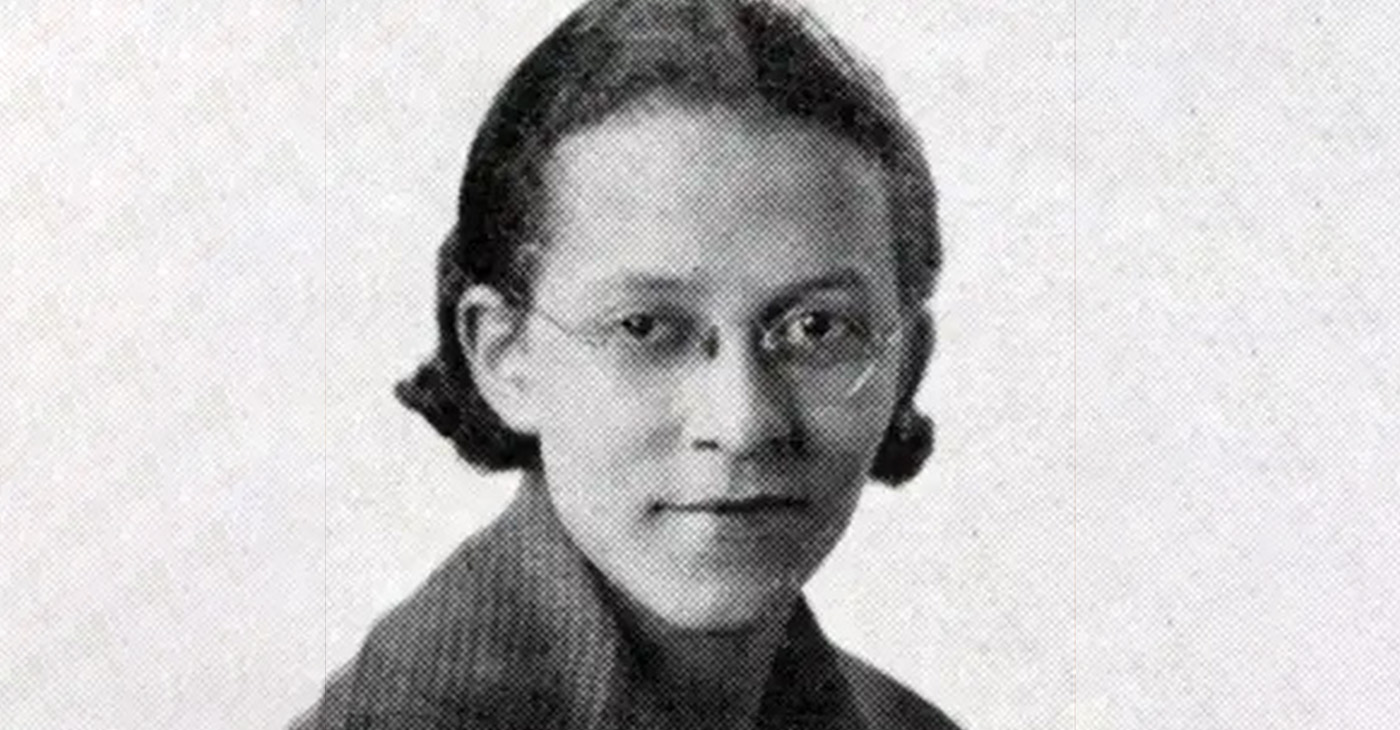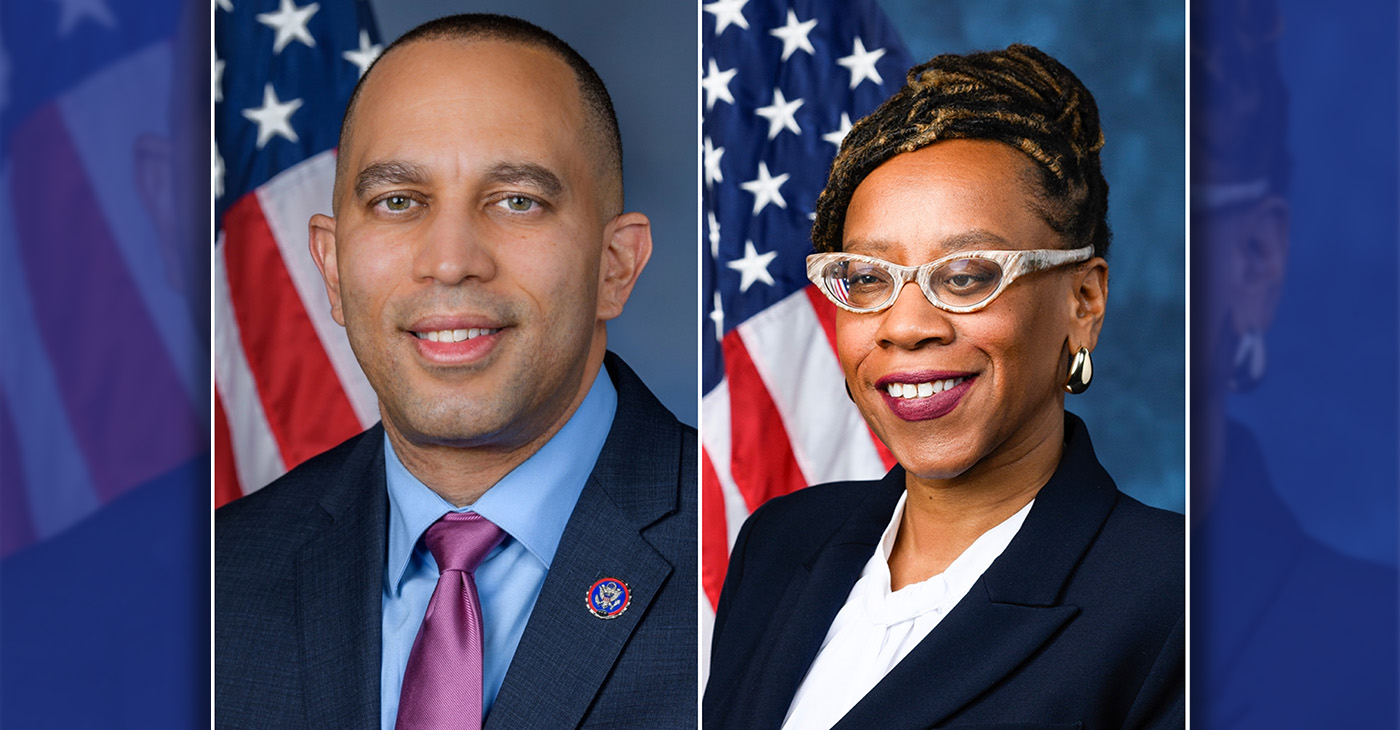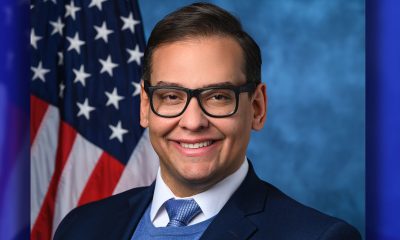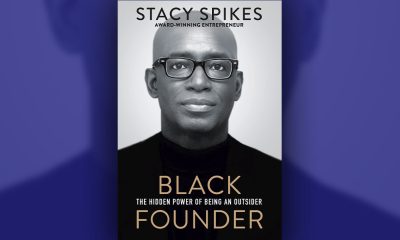Arts and Culture
In Memoriam: Former Supreme Mary Wilson Leaves Legacy of Black Pride and Resilience
Gordy expressed his sadness over Wilson’s death. “The Supremes were always known as the ‘sweethearts of Motown,’” Gordy said. “Wilson, along with Diana Ross and Florence Ballard, came to Motown in the early 1960s. After an unprecedented string of No. 1 hits, television and nightclub bookings, they opened doors for themselves, the other Motown acts, and many, many others.”

Mary Wilson, a co-founder of the best-selling girl group the Supremes, died in her sleep early Tuesday at her home in Las Vegas, Nev. She was 76.
A singer, best-selling author, motivational speaker, businesswoman, former U.S. Cultural Ambassador, mother, and grandmother, the legendary Wilson made great strides on her inevitable journey to greatness.
As an original/founding member of The Supremes, she changed the face of popular music to become a trendsetter who broke down social, racial, and gender barriers, which all started with the wild success of their first No. 1 song in 1963.
With her childhood friend Florence Ballard and lead singer Diana Ross, the Supremes achieved an unprecedented 12 No.1 hits in the mid-1960s and became international superstars by 1964 on the Motown record label, started just a few years before by Berry Gordy.
Gordy expressed his sadness over Wilson’s death. “The Supremes were always known as the ‘sweethearts of Motown,’” Gordy said. “Wilson, along with Diana Ross and Florence Ballard, came to Motown in the early 1960s. After an unprecedented string of No. 1 hits, television and nightclub bookings, they opened doors for themselves, the other Motown acts, and many, many others.”
Born in Greenville, Miss., on March 6, 1944, Wilson moved North with her family ending up in Detroit, Wis., where Berry Gordy’s Motown record label was just warming up.
She was a school friend of Ballard, who invited her to audition for the Primettes, a sister group to a boys’ trio called the Primes.
Wilson was accepted and she and Ballard would be joined by Diana Ross and Betty McGlown. By 1962, they were a trio and their first hit – “When the Lovelight Starts Shining Through His Eyes” — came the following year.
“Where Did Our Love Go?” became their first song to reach No. 1 on the pop charts and a string of hits followed making them international superstars by 1964.
With the Supremes, Wilson achieved an unprecedented 12 No.1 hits, with five of them consecutive from 1964-65. Those songs are “Where Did Our Love Go,” “Baby Love”, “Come See About Me,” “Stop! In the Name of Love,” and “Back in My Arms Again,” according to Billboard Magazine.
But all was not well. In 1967, Gordy decided to change their name to Diana Ross and the Supremes and Ballard decided to leave the group. Many years later, Wilson would express her disappointment and stick up for her friend, lobbying for a U.S. postage stamp with Ballard’s image.
“People forget that Florence Ballard not only gave us our name, but she formed the group,” Wilson revealed on “Fiyah!” a program sponsored by the Black Press of America.
“It was really Flo who formed us, and I want people to know that. I am putting together a program to get Florence Ballard a U.S. stamp, hopefully, so I want people to send their request and say something about Florence” Wilson said of her friend who died of a heart attack in 1976. “All those hits were Florence, so when you are listening to [The Supremes], it’s about Flo, so I want people who listen to those songs that bring back memories, think about Flo.”
Ballard was replaced by Cindy Birdsong and the group continued to perform until 1970 when Ross would leave the group for a solo career in 1970. The group continued to have hits like “Stoned Love” in 1970.
By the mid-1970s, Wilson was doing half of the Supremes’ lead vocals but she left the group in 1977.
Nearly a decade later, Wilson found success in writing her memoirs: “Dreamgirl: My Life as a Supreme,” in 1986 and “Supreme Faith: Someday We’ll Be Together” in 1990.
She became a frequent guest on TV talk shows and performed regularly in Las Vegas casinos and resorts.
Colin Powell named her a cross-cultural ambassador in 2002 and she appeared at events sponsored by the State Dept.
Wilson released CDs in 2006 and 2010, while also becoming a musical activist, going to court to prevent impostors from performing under the names of groups from the 1950s and ‘60s, including the Motown group the Marvelettes as well as the Supremes. The law was passed in 27 states.
She lectured all over the world giving advice on reaching goals and triumphing over adversity and became known for her charity work with the American Cancers Society, St. Jude’s Children’s Research Hospital and the NAACP among others, including the Figure Skaters of Harlem, which encourages youth gain entry to the Olympics.
In 2019, Wilson appeared in a “Dancing With the Stars” segment and published “Supreme Glamour,” an appreciation of the fashion the Supremes wore on stage. A collection of the gowns has been on exhibit at the Rock & Roll Hall of Fame in Cleveland, Ohio, since 2008.
With the Supremes, Wilson was inducted into the National Rhythm and Blues Hall of Fame in 2013 and received a lifetime Achievement Award from the National Newspaper Publishers Association in 2020.
Wilson married Pedro Ferrer in 1974 and the couple had three children: Turkessa, Pedro Antonio and Rafael. She and Ferrer divorced in 1981. In 1994, Rafael was killed in a car accident.
“Ms. Wilson used her fame and flair to promote a diversity of humanitarian efforts, including ending hunger, raising HIV/AIDS awareness, and encouraging world peace. Mary was working on getting a U.S. postage stamp of her fellow bandmate and original Supreme Florence Ballard who passed away in 1976,” longtime publicist and friend Jay Schwartz said.
She was working on new projects for 2021, including an album she recently teased on her YouTube channel. Her primary love was preserving the legacy of the Supremes and introducing her music to new generations.
“I think that The Supremes had a lot to do with the awakening of the world in terms of what blackness was,” Wilson said in her 2020 NNPA interview. “The whole world was watching Black people in a way they’d never seen.”
Wikipedia, Stacy Brown/NNPA contributed to this report.
Activism
Golden State Warriors Program Is Inspiring Next Generation of Female Engineers
Breaking down barriers and biases that deter young girls from pursuing STEAM subjects is essential for creating a level playing field and ensuring equal opportunities for all. By challenging stereotypes and promoting a culture of inclusivity and diversity in STEAM fields, experts believe young girls can be empowered to pursue their interests and aspirations without limitations confidently. Encouraging mentorship, providing access to resources, and celebrating girls’ achievements in STEAM are all crucial steps in creating a supportive environment that fosters success.

By Y’Anad Burrell
The Golden State Warriors and e-commerce giant Rakuten are joining forces to inspire the next generation of female engineers through Building STEAM Futures, part of The City Calls campaign.
Organizers say the initiative is founded on the idea that science, technology, engineering, arts, and mathematics (STEAM) are crucial fields for innovation and progress, and empowering young girls to pursue careers in these areas is more important than ever. Studies consistently show that girls are underrepresented in STEAM fields, resulting in a gender disparity that limits potential and hinders diversity.
Breaking down barriers and biases that deter young girls from pursuing STEAM subjects is essential for creating a level playing field and ensuring equal opportunities for all. By challenging stereotypes and promoting a culture of inclusivity and diversity in STEAM fields, experts believe young girls can be empowered to pursue their interests and aspirations without limitations confidently. Encouraging mentorship, providing access to resources, and celebrating girls’ achievements in STEAM are all crucial steps in creating a supportive environment that fosters success.
On Saturday, March 8, International Women’s Day, the Warriors and Rakuten hosted 20 middle school girls from Girls Inc. of Alameda County at Chase Center’s Above the Rim for a hands-on bridge-building experience. The young girls from Girls, Inc. of Alameda County had an opportunity to design, build and test their own bridge prototypes and learn the fundamentals of bridge construction from the Engineering Alliance and the UC Berkeley Steel Bridge Team.
This STEAM experience for the girls followed the first session in January, where they took a behind-the-scenes tour of the Golden Gate Bridge, learning about its design and construction from industry experts. The City Calls campaign, tipped off with the unveiling the Warriors’ new bridge-themed City Edition jerseys and court design earlier this year.
Arts and Culture
Beverly Lorraine Greene: A Pioneering Architect and Symbol of Possibility and Progress
Greene graduated from the University of Illinois at Urbana-Champaign in 1936 with a degree in Architecture — a remarkable accomplishment for an African American woman at the time. She was never discouraged by the racial and gender discrimination that saturated her field.

By Tamara Shiloh
In the mid-20th century, Beverly Lorraine Greene was recognized as the first African American woman licensed to practice architecture in the United States.
Greene was born on Oct. 4, 1915, in Chicago during an era when opportunities for African Americans, particularly women, were severely limited.
Her parents, James and Vera Greene, were deeply invested in her education, instilling in her a belief in the power of intellect and perseverance. She grew up during the Great Migration that transformed Chicago starting in 1900.
Greene graduated from the University of Illinois at Urbana-Champaign in 1936 with a degree in Architecture — a remarkable accomplishment for an African American woman at the time. She was never discouraged by the racial and gender discrimination that saturated her field.
Greene continued her education, earning a master’s degree in City Planning and Housing in 1937, also from the University of Illinois. Her ambition was not merely to design structures but to shape spaces that fostered equity and community. In 1942, she became the first African American woman licensed as an architect in the United States, obtaining her credentials in Illinois. This groundbreaking achievement, however, did not translate immediately into job opportunities.
Early in her career, she faced significant discrimination from firms unwilling to hire a Black woman. However, her determination never wavered. In 1945, Beverly moved to New York City, a place she believed could offer broader professional opportunities.
She joined the architectural department of the New York City Housing Authority, focusing on affordable housing projects. Her work during this time reflected her commitment to using architecture as a tool for social justice, ensuring that marginalized communities had access to well-designed, dignified living spaces.
Greene’s talents soon drew the attention of prominent firms. She was hired by Isadore Rosenfield, a respected architect known for designing hospitals. She contributed to the design of healthcare facilities, including the modernization of Harlem Hospital. Her portfolio expanded in collaboration with architectural personalities such as Marcel Breuer and Edward Durell Stone.
Notably, she worked on the prestigious UNESCO headquarters in Paris — a landmark project that brought her skills to an international stage. Her involvement underscored her ability to navigate the intricacies of large-scale, global projects, proving that her talents transcended the limitations society sought to impose.
Greene’s career was tragically cut short when she passed away unexpectedly in 1957 at the age of 41. Though her life was brief, her impact was profound. She shattered entrenched barriers, paving the way for future generations of Black architects and women in the field.
Activism
U.S. House Minority Leader Hakeem Jeffries and Rep. Lateefah Simon to Speak at Elihu Harris Lecture Series
The popular lecture series is co-produced by the Oakland-based Martin Luther King Jr. Freedom Center and Peralta Community College District. Jeffries’ appearance marks the 32nd lecture of the Barbara Lee and Elihu Harris Lecture Series, which has provided thousands of individuals with accessible, free, high-quality information.

By Scott Horton
United States House of Representatives Minority Leader Hakeem Jeffries (D-NY-8) will be a speaker at the Barbara Lee and Elihu Harris Lecture Series on Friday, Feb. 21.
The event will be held at the Henry J. Kaiser Center for the Arts, 10 Tenth Street in Oakland, at 7 p.m.
The popular lecture series is co-produced by the Oakland-based Martin Luther King Jr. Freedom Center and Peralta Community College District. Jeffries’ appearance marks the 32nd lecture of the Barbara Lee and Elihu Harris Lecture Series, which has provided thousands of individuals with accessible, free, high-quality information.
The overarching goal of the lecture series is to provide speakers from diverse backgrounds a platform to offer their answers to Dr. King’s urgent question, which is also the title of Jeffries’ latest book: “Where do we go from here: Chaos or Community?”
In addition to Jeffries, Congresswoman Lateefah Simon (D-CA-12) will also speak.
“Certainly, now is a time for humanity, in general, and Americans in particular to honestly and genuinely answer Dr. King’s question,” said Dr. Roy D. Wilson, Executive Director of the Martin Luther King Jr. Freedom Center and Executive Producer of the lecture series.
“Dr. King teaches that time is neutral but not static. Like the water in a river, it arrives and then quickly moves on,” continued Wilson. “We must urgently create conditions for listening to many different answers to this vital question, and generate the development of unity of action among all those who struggle for a stronger democracy.”
In his book, Jeffries shares his experience of being unanimously elected by his colleagues as the first African American in history to ever hold the position of House Minority Leader.
In January 2023 in Washington, Jeffries made his first official speech as House Minority Leader. He affirmed Democratic values one letter of the alphabet at a time. His words and how he framed them as the alphabet caught the attention of Americans, and the speech was later turned into a book, The ABCs of Democracy, bringing Congressman Jeffries rousing speech to vivid, colorful life, including illustrations by Shaniya Carrington. The speech and book are inspiring and urgent as a timeless reminder of what it means to be a country with equal opportunities for all. Jeffries paints a road map for a brighter American future and warns of the perils of taking a different path.
Before his colleagues unanimously elected him Minority Leader in 2022, Jeffries previously served as Chair of the House Democratic Caucus and as an Impeachment Manager during the first Senate trial of the 45th President of the United States.
Jeffries was born in Brooklyn Hospital, raised in Crown Heights, grew up in the Cornerstone Baptist Church and he is a product of New York City’s public school system, graduating from Midwood High School. Jefferies went on to Binghamton University (BA), Georgetown University (master’s in public policy) and New York University (JD).
He served in the New York State Assembly from 2007 to 2012.
Admission is free for the Feb. 21 Barbara Lee and Elihu Harris Lecture Series featuring Congressman Jeffries. Please reserve seats by calling the Martin Luther King Jr. Freedom Center at (510) 434-3988.
Signed copies of his book will be available for purchase at the event.
-

 Activism2 weeks ago
Activism2 weeks agoWe Fought on Opposite Sides of the Sheng Thao Recall. Here’s Why We’re Uniting Behind Barbara Lee for Oakland Mayor
-

 #NNPA BlackPress2 weeks ago
#NNPA BlackPress2 weeks agoRev. Dr. Jamal Bryant’s Black Church Target Boycott Mobilizes 150,000
-

 Activism4 weeks ago
Activism4 weeks agoOakland Post: Week of March 5 – 11, 2025
-

 Activism3 weeks ago
Activism3 weeks agoSan Francisco Is Investing Millions to Address Food Insecurity. Is Oakland Doing the Same?
-

 #NNPA BlackPress2 weeks ago
#NNPA BlackPress2 weeks agoRecently Approved Budget Plan Favors Wealthy, Slashes Aid to Low-Income Americans
-

 #NNPA BlackPress4 weeks ago
#NNPA BlackPress4 weeks agoTrump Moves to Dismantle Education Department
-

 #NNPA BlackPress4 weeks ago
#NNPA BlackPress4 weeks agoFighting to Keep Blackness
-

 Activism2 weeks ago
Activism2 weeks agoFaith Leaders Back Barbara Lee for Mayor, Criticize Candidate Loren Taylor for Dishonest Campaigning
























































